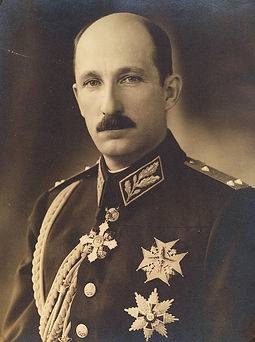History
Historical Photos:
The Bulgarian royal family of the 1900s, led by Tsar Ferdinand I and later Tsar Boris III, held significant influence in the country's history. They played pivotal roles in shaping Bulgaria's political landscape during this era, overseeing periods of modernization and reform. Vrana Palace near Sofia served as their primary residence, embodying their status and power.
Kazichene Railway Station, located nearby, played a crucial role in facilitating the royal family's private travels. Serving as a key transportation hub, it enabled seamless movement between Sofia and other regions of Bulgaria. The station's strategic location made it integral to the royal family's transportation network, ensuring efficient travel and communication throughout the country.
Map:

Kazichene Railway Station's proximity to Vrana Palace provided convenience for the royals, reflecting their control over transportation infrastructure and their ability to navigate Bulgaria effectively. In the context of Bulgarian royal history, Kazichene Railway Station symbolizes the monarchy's efforts to modernize and maintain power during the tumultuous 20th century.
Royal Passion:

Tsar Boris III
In 1910, at just 17 years old, Tsar Boris III passed the train driver's exam on the Kaspichan - Varna line. He frequently initiated journeys with the palace's own train, personally operating the locomotive. These anecdotes illustrate the royal family's deep involvement in transportation during the early 20th century.
The narrow gauge railway station welcomed an array of notable figures, including emperors and kings such as George V and Edward VIII of Britain, Kaiser Wilhelm II of Germany, and King Charles II of Romania. Other distinguished guests included Ottoman Crown Prince Yusuf Izedin, Italian Queen Helena, and Grand Duke Alexander Mikhailovich of Russia. The station also hosted political leaders like Mussolini's son-in-law Count Galeazzo Cano, as well as military figures such as Marshal of the USSR Fyodor Ivanovich Tolbukhin. Additionally, the station saw visits from renowned artists like Rabindranath Tagore and Fyodor Chaliapin, showcasing its significance as a hub for both royalty and intellectuals.

The European royals who had traveled with this railway
Why was the Railway Station abandoned?
After the Second World War, the royal railway station saw diminished usage primarily due to the decline of monarchy across Europe, including Bulgaria. With the post-war political and economic transformations, nationalization of railways became common, likely resulting in the absorption of the royal railway station into the national network. Moreover, changing transportation trends, such as the increasing popularity of automobiles and airplanes, reduced the demand for rail travel, even among royalty. The costs associated with maintaining and operating a dedicated royal railway station played a role, particularly amidst post-war economic challenges.







